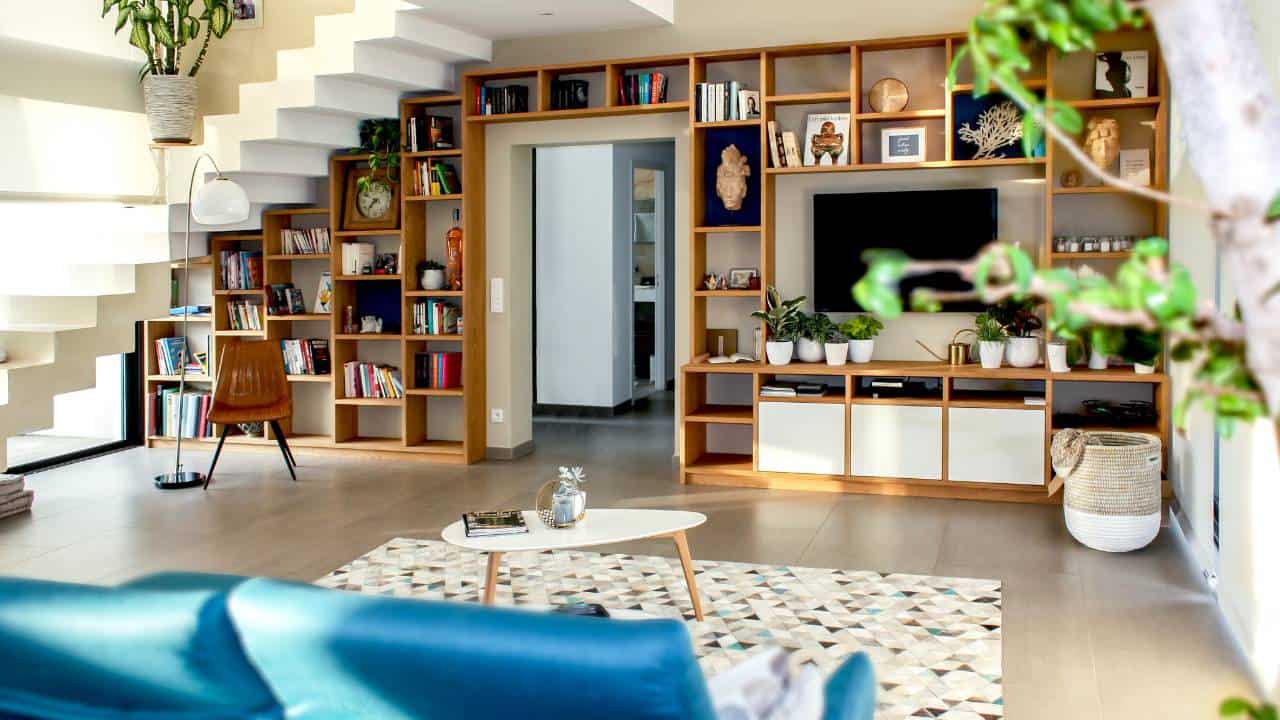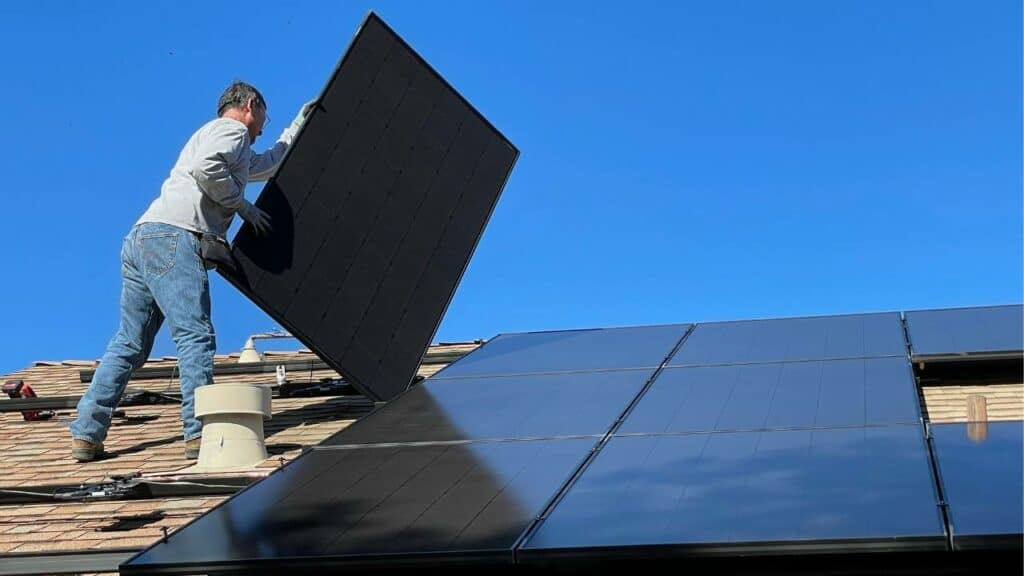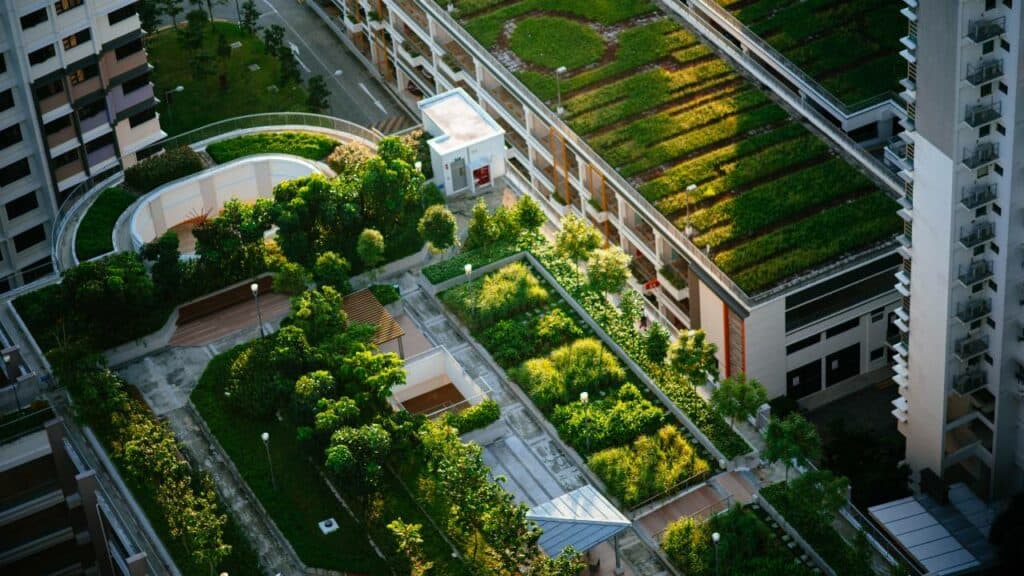
In our ever-evolving world, the concept of home has always been synonymous with safety, comfort, and belonging. But as the world grapples with environmental challenges, the definition of ‘home’ is expanding to include not just where we live, but how we live.
The very idea of a comfortable home is being reimagined, with sustainability at its core. The homes of tomorrow need to be built with both our comfort and the planet’s well-being in mind. This shift isn’t just about using eco-friendly materials or saving on electricity.
It’s a holistic approach to living, encompassing energy efficiency, design, technology, and even our lifestyle choices. So, as we stand on the brink of a green revolution in home living, what trends are paving the way?
The Rise of Energy-Efficient Homes

In recent years, the priorities of the architecture and construction industries have undergone a significant transformation. Previously, homes were chiefly designed with aesthetics and durability in mind, but now the lens has shifted towards energy efficiency. But what has driven this change?
One of the most compelling reasons is our growing understanding of carbon footprints. As awareness about global warming and the damaging impacts of greenhouse gases has surged, homeowners have become acutely conscious of their contribution to the bigger picture. An energy-efficient home is not just a structure; it’s a statement of intent, a commitment to reducing one’s carbon emissions and playing a role in combating climate change.
Beyond the environment, there’s a tangible economic advantage to energy-efficient homes. While the initial outlay for enhanced insulation, optimised windows, and energy-efficient appliances might be higher, the long-term savings are undeniable. Reduced energy consumption translates to considerably lower energy bills, making the upfront investment worthwhile in the long run.
Modern technology also deserves much of the credit for this shift. Innovations have provided a plethora of solutions that elevate a home’s energy efficiency. Whether it’s smart thermostats that adapt to our daily routines or state-of-the-art heating and cooling systems, technology has underpinned the evolution of the energy-efficient home.
But it’s not all about savings or technology. There’s a human element too. Energy-efficient homes enhance the quality of life. They maintain consistent indoor temperatures, provide better air quality, and shield inhabitants from external pollutants. This doesn’t just make for a comfortable living environment; it contributes to a healthier one.
Lastly, from a real estate perspective, energy-efficient homes are becoming increasingly desirable. Their growing demand translates to a higher resale value. So, homeowners are not just investing in the present; they’re securing their future too.
Innovative Insulation Techniques
When we think of homes, warmth and protection often come to mind. At the core of providing these comforts is insulation, a silent guardian that stands between us and the external elements. Traditional insulation methods, like fibreglass and mineral wool, have served us well over the years, but as our understanding of energy efficiency and sustainability deepens, the world of insulation is experiencing a significant evolution.
Today’s insulation techniques are a combination of scientific innovation and environmental consciousness. As we continually strive for homes that are energy-efficient, the demand for materials and methods that can provide optimal thermal resistance with the least environmental impact is on the rise. In response to this, newer materials, such as aerogel and vacuum-insulated panels, have emerged. These materials not only provide superior insulation but are also lighter and often more sustainable in their production and disposal.
Furthermore, the application methods of insulation have seen innovations. Spray foam insulation, for instance, offers a seamless and comprehensive coverage, ensuring no nooks or crannies are left uninsulated. This approach not only enhances the home’s thermal efficiency but also addresses issues like moisture infiltration, which traditional methods might overlook.
Behind these advancements stand companies that are dedicated to pushing the boundaries of what insulation can achieve. One such company, Usher Insulation, has been instrumental in pioneering techniques that marry performance with sustainability. Their commitment and others like them are reshaping the way we think about insulation, making it not just about keeping our homes warm or cool but about doing so in a way that’s in harmony with our planet.
Moreover, the ripple effect of effective insulation cannot be understated. Besides providing the ultimate comfort, well-insulated homes require less energy to heat or cool, leading to reduced energy consumption and, by extension, a decrease in greenhouse gas emissions. This positions insulation as not just a home improvement measure but as a crucial step in our global effort to combat climate change.
The Role of Renewable Energy

Renewable energy has begun to redefine the contours of modern living. No longer are we bound to the confines of fossil fuels, which have long been the dominant source of energy but come with a slew of environmental consequences. Instead, we find ourselves at the precipice of an energy revolution, where sustainable sources like solar, wind, and hydropower are not just alternatives but becoming central to our energy narrative.
Solar energy, in particular, has seen a meteoric rise. From vast fields of solar panels in rural landscapes to discreet installations on urban rooftops, the sun’s power is being harnessed more than ever. Its appeal isn’t just its inexhaustibility; it’s also about decentralising power production, allowing even individual homes to contribute to, and benefit from, the energy grid.
Wind energy, too, has gained significant traction. While towering wind turbines set in remote locations might be a common image, advancements in technology have made it possible to create smaller, more efficient turbines suitable for diverse settings. The allure of wind energy lies in its simplicity: using the natural, unending flow of air to generate power.
Hydropower, although a veteran in the renewable energy sector, continues to evolve. With the introduction of micro-hydropower systems, even small streams and rivers can be utilised for power generation, making it an accessible option for various communities.
However, the movement towards renewable energy isn’t just about the environment or technological innovation. It’s deeply intertwined with economics. As the costs of producing solar panels, turbines, and other renewable infrastructure continue to fall, renewable energy is becoming increasingly competitive with traditional energy sources. This affordability, combined with the environmental benefits, is driving a societal shift. Communities, businesses, and individuals are recognising the multifaceted advantages of renewables.
Sustainable Architecture and Design
The concept of home is undergoing a transformation. Gone are the days when architecture was merely about aesthetics and structure. Today, sustainable architecture and design play an integral role in how we envision and build our living spaces. It’s not just about creating buildings that stand tall, but ones that coexist harmoniously with the environment.
Sustainable architecture goes beyond the choice of eco-friendly materials; it involves a holistic approach that takes into consideration the life cycle of a building. This begins right from the site selection, ensuring minimal disturbance to the natural habitat, to optimising the design for natural light and ventilation, thereby reducing the dependence on artificial lighting and mechanical cooling. Furthermore, incorporating renewable resources saves businesses money, emphasising the economic advantages of eco-friendly choices.
A key facet of sustainable design lies in its adaptability. The world around us is ever-changing, and our buildings should be able to adapt to these changes. Whether it’s the incorporation of modular designs that allow spaces to evolve with changing needs or employing construction techniques that facilitate easy refurbishment without the need for complete teardowns, adaptability ensures the longevity of a building.
Green roofs are another innovative stride in sustainable architecture. Not only do they provide additional insulation, reducing energy consumption, but they also combat the urban heat island effect and offer a haven for biodiversity. Alongside this, the integration of rainwater harvesting systems provides a dual benefit: reducing the strain on municipal water supplies and ensuring that gardens and green spaces can thrive even in urban settings.
But sustainability isn’t just about the physical aspects of a building. It’s also about the experiences it facilitates. The best of sustainable designs offer spaces that uplift, inspire, and connect. They blend the indoors with the outdoors, create communal spaces that foster community spirit, and utilise materials and designs that resonate with the local culture and history.
This ethos of sustainable architecture and design has gained momentum, not just because of the palpable environmental and economic benefits it offers, but also due to a growing societal awareness. People are increasingly seeking homes and spaces that reflect their values, prioritising well-being, and ecological balance over opulence.
Urban Green Spaces and Biodiversity

Amid the sprawling urban landscapes and the rise of skyscrapers, there emerges a pressing need to balance our cities with natural elements. Urban green spaces, from parks to green alleys and vertical gardens, are not just aesthetic additions; they serve as vital lungs for our cities and sanctuaries for urban biodiversity.
As urbanisation continues its relentless march, the challenges it poses to biodiversity are evident. Habitats get fragmented, native flora and fauna face disruptions, and urban heat islands become more pronounced. In this milieu, urban green spaces act as oases, providing habitats for a diverse range of species and offering them a respite from the concrete jungles.
Beyond biodiversity, these green spaces have profound benefits for city dwellers. They provide areas for recreation and relaxation, places where children can play, and communities can bond. The mental and physical health benefits of having access to greenery and nature within urban settings are well-documented, with studies indicating reduced stress levels, improved mood, and enhanced general well-being among urbanites who frequently engage with such spaces.
Moreover, urban green spaces play a pivotal role in climate resilience. They absorb rainwater, reducing the risk of flooding, act as carbon sinks, and mitigate the urban heat island effect by providing shade and releasing moisture. This natural air conditioning system becomes invaluable during heatwaves, offering a cooling respite to residents and reducing the dependence on energy-intensive air conditioners.
Incorporating these spaces isn’t just about setting aside plots of land but about creatively intertwining nature with urban infrastructure. Just as revamping your business can involve integrating sustainable practices, cities can evolve by incorporating rooftop gardens in apartment buildings or transforming derelict land into thriving community gardens. These possibilities stand as a testament to what’s achievable when urban planning harmonises with nature.
In the larger narrative of sustainable living, the emphasis on urban green spaces is a reminder. It tells us that even in our most densely populated areas, nature has a place, a role, and an undeniable significance. Embracing this not only enriches our urban environments but also strengthens the bond between humanity and the natural world, ensuring that as we build our future cities, they echo with the vibrant chorus of life.
Smart Cities: Harnessing Technology for Sustainable Living
In a rapidly digitising world, the merger of technology and urban planning is inevitable. Enter the concept of smart cities — urban centres that leverage technology, data, and innovative design to improve sustainability, efficiency, and the overall quality of life for their inhabitants.
At the heart of a smart city is the concept of connectivity. By integrating various data sources, from traffic patterns to energy consumption, city planners can make informed decisions that streamline urban processes. For instance, adaptive traffic lights can reduce congestion and resultant emissions, while smart grids ensure efficient electricity distribution, adjusting in real-time to the needs of the city.
Waste management, often a significant challenge in urban centres, is being revolutionised by smart waste systems. These systems use sensors to monitor waste levels in real-time, allowing for timely collections and reduced overflow issues. Such advancements, while seemingly minor, collectively contribute to cleaner and more hygienic urban environments.
Beyond infrastructure, smart cities focus on the inhabitants themselves. With the rise of Internet of Things (IoT) devices, homes and offices can be transformed into hubs of efficiency. Smart thermostats, lighting, and appliances adjust to the needs and routines of their users, optimising energy consumption. Furthermore, data-driven insights can empower residents, offering them real-time feedback on their energy usage and suggesting ways to reduce their carbon footprint.
However, the journey to becoming a smart city isn’t solely about technological integration; it’s about doing so responsibly. Ensuring data privacy and security becomes paramount, as does making certain that the benefits of the smart city reach all residents, preventing a digital divide.
In the grand tapestry of urban evolution, smart cities represent a symbiosis of technological advancement and sustainable thinking. They offer a blueprint for a future where our cities are not just larger but smarter, more attuned to the needs of both the planet and their inhabitants. As we stand on the cusp of this transformative era, it’s exciting to envisage a world where technology becomes a catalyst for sustainable urban living.
Conclusion
Sustainability, once a peripheral consideration, has now become the core tenet guiding our choices, from the buildings we design to the cities we envision. The intricate dance between sustainable architecture, innovative insulation methods, green urban spaces, and the promise of smart cities underlines the richness of our collective imagination and our commitment to a future that respects both humanity and nature.
These innovations and movements aren’t isolated; they are interconnected threads in the fabric of a sustainable urban future. Whether it’s the introduction of a new insulation technique, the planting of a community garden in the heart of a bustling city, or the harnessing of technology to optimise energy use, each step marks our progress towards a harmonious coexistence with our planet.